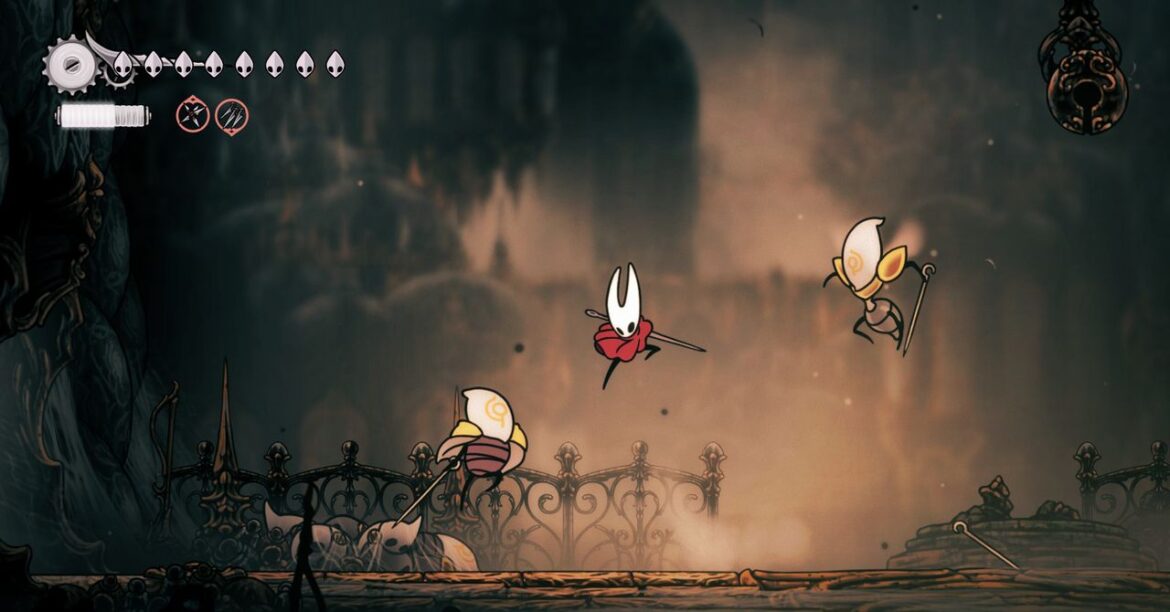Why you can trust TechRadar
We spend hours testing every product or service we review, so you can be sure you’re buying the best. Find out more about how we test.
Questyle QCC Dongle Pro: Two-minute review
You may not realise it, but your phone and your wireless headphones don’t always agree on how good your music should sound. It’s a question of compatibility, and it can be a thorny issue.
Bluetooth audio codecs are the invisible lines of code that translate your music (whether streamed from a subscription service or stored locally on your phone) into something that can be transmitted wirelessly to your headphones, earbuds, or portable speakers.
All Bluetooth products support SBC, a codec that provides basic ‘vanilla’ audio quality, but when it comes to high-quality advanced codecs, like LDAC and aptX Adaptive (which preserve far more of your music’s detail), it’s the wild west out there. Some Android handsets support both. Some just support one. iPhones (in fact, all Apple devices) support neither. Support on the headphones/earbuds side of the equation can be equally messy – and it doesn’t always follow that the more you pay, the more codecs your buds (or cans) will support.
So wouldn’t it be nice if there were a tiny, simple (yet powerful) gadget you could plug into any phone, tablet, computer, or game console that would assure you’ve always got support for these codecs? Behold – the Questyle QCC Dongle Pro.
Plug it in, open the app, and pair your headphones. Done. You’re now listening wirelessly at the highest possible quality (perhaps even losslessly) and you didn’t even have to mess around in Android’s Developer Options.
All of this makes the Questyle QCC Dongle Pro a very attractive little accessory for anyone who wants to maximize their listening experience.
One of the best portable DACs around – and more specifically, one of the best wireless Bluetooth DACs we’ve tested? Let’s get to it.
Oh, it’s red and no mistake (Image credit: Future)
Questyle QCC Dongle Pro review: Price and release date
- Release date: August 29, 2025
- Price: $99 (around £70; AU$150)
$99 may seem like a lot for what you get. After all, it is tiny – and this device doesn’t make music or even play music; it just makes the music you already have access to sound better, with no guesswork.
I’ve also tried the $50 FiiO BT11, a nearly identical-looking product that, on paper at least, does all the same things. But it’s so maddeningly difficult to use, I’d happily pay the difference for the QCC Dongle Pro.
Still, there is another option. If you don’t need LDAC (perhaps because your Android phone already supports it), you can get the aptX-family-only QCC Dongle for $69 and save yourself some cash.
Elsewhere (and if you’ve got hard-to-drive headphones and a little more to spend), we love the FiiO BTR17 for its amplification powers on top of its codec mastery, and TR’s audio editor still uses the FiiO BTR7 – both around $200 / £175 / AU$279.
Questyle QCC Dongle Pro review: Specs
Swipe to scroll horizontallyQuestyle QCC Dongle Pro: specs
Dimensions
25mm x 10mm x 15mm
Weight
2.5 grams
Supported codecs
SBC, aptX, aptX HD, aptX Adaptive (including aptX Lossless), LDAC
Supported interfaces
USB-C, USB-A (UAC 1, UAC 2)
System compatibility
WinXP/Vista/Win7/Win8/Win10/Win11/Linux/Android/HarmonyOS/macOS/iOS/iPadOS
Bluetooth version
5.4
Power draw
37mA
Questyle QCC Dongle Pro review: Features
- Excellent codec support
- Easy, intuitive app
- Works with almost all USB-equipped devices
A helpful app lets you control the dongle’s two main functions: getting it paired with your headphones and picking which codec and optional settings you want to use. An LED on the QCC Dongle Pro gives visual feedback on its pairing status as well as which family of codec is currently in use – a reassuring feature.
Better yet, as long as your headphones or earbuds support Bluetooth Multipoint, it’s possible to connect them to the dongle and your phone simultaneously. Doing so maintains your ability to adjust the headphones’ settings via their mobile app (if any).
Oh, and one more thing: the dongle also supports USB Audio Class 1 (UAC 1), which is a spec-speak way of saying you can use it as a wireless audio transmitter with gaming consoles like Nintendo Switch and PlayStation families – devices that don’t play nicely with run-of-the-mill USB Bluetooth dongles. Full disclosure: I didn’t test this feature.
You can use it as a transmitter for a PC or Mac, too, though with one caveat: there’s no Windows or macOS app, so you’ll need to initially pair your preferred headphones using the mobile app on a phone, then move the dongle over to your PC. It will automatically re-pair with your headphones and then you simply need to choose the Dongle Pro from your computer’s sound output menu.
Worried about the Dongle Pro sapping your phone’s battery life? Don’t be. With a 37mA draw, Questyle estimates that even if you used it intensively (e.g., with LDAC) for 10 hours straight, you’d only dent an iPhone 16’s full battery capacity by about 10%. Using aptX Adaptive would consume less juice. I didn’t notice any impact on my day-to-day use of my iPhone.
The bulk of my testing was done with the Sennheiser IE900 or the Austrian Audio ‘The Composer’ (Image credit: Questyle)
The QCC Dongle Pro is so easy and effective that it’s hard to find flaws. But if I were to nitpick, I’d point to the fact that the Questyle app doesn’t give audio nerds as much control over codec behavior as, say, Android’s Developer Options, or the uber-handy Bluetooth Codec Changer app.
For instance, purists often want to avoid additional resampling between their source of digital music and the output that gets to their headphones. With the apps/settings I mentioned above, you can set LDAC’s bit-depth and sampling rate to match that of your source. The QCC Dongle Pro doesn’t provide this level of control. The same goes for LDAC’s bitrate; however, you can nonetheless choose to favour sound quality over connection stability, which should accomplish the same thing.
I might also note that the dongle can’t support simultaneous Bluetooth connections. So if you were hoping to connect a set of wireless earbuds using LDAC and a set of headphones using aptX HD so you can hear the difference, I’m afraid you’ll have to find another way of satisfying your inner scientist.
Features score: 4.5 / 5
Note the ‘wings’ (Image credit: Future)
Questyle QCC Dongle Pro review: Design
- Tiny and featherweight
- Fits most phone cases
- Might block adjacent ports
The QCC Dongle Pro can plug directly into any device that can output audio over USB. At 2.5 grams, it weighs less than half as much as a single AirPods Pro earpiece. On its own, it will snap into USB-C ports, and a small ledge lets it protrude about two millimeters, making it compatible with many 3rd-party protective phone cases. It also comes with an adapter for gadgets that are still rocking USB-A ports. The only devices it can’t support are older iPhones/iPads with Lightning ports.
It’s a phone-friendly design, as long as you don’t mind using wireless charging while it’s plugged in. For laptops, especially those like the Apple MacBook Air with just two, closely spaced USB-C ports, the Dongle Pro forces the same choice, but without the fallback of wireless charging: You can have better Bluetooth audio or you can charge your computer, but not both.
Design score: 4.5 / 5
Everything in its right place… (Image credit: Future)
Questyle QCC Dongle Pro review: Sound quality
- Perfect match for LDAC/aptX devices
- Lets you choose which codec to use when more than one will work
How does it perform? Brilliantly. Which is to say, when I use it on an iPhone 16 in either LDAC or aptX Lossless mode, with a compatible set of headphones, and then compare it to a phone with these codecs built in (e.g., Motorola ThinkPhone), they sound the same to me. I’m not sure I could ask for anything more.
Sony’s WH-1000XM6 (LDAC) revealed the subtle details in Dire Straits’ You And Your Friend that tend to go missing when listening via AAC. Similarly, Sennheiser’s aptX Lossless compatible Momentum True Wireless 4 Earbuds were able to tame the blurry bass notes and crunchy highs that I typically hear when playing Bob Dylan’s Man in the Long Black Coat.
Given how convenient it is to pop the Dongle Pro into the bottom of my iPhone, I can easily see it becoming a permanent fixture in my daily listening life.
Sound quality score: 5 / 5
This white light (for aptX Lossless) was oddly hard to come by when using sources able to handle it… (Image credit: Future)
Questyle QCC Dongle Pro review: Value
- Pricey compared to other transmitters
- Unmatched codec support
- Perfect size/shape for mobile use
Though a pricey little device, you need to look at the QCC Dongle Pro in the context of your other options.
Most companies that make USB-C Bluetooth transmitters that sell for between $25-$55 on Amazon come with one or more compromises. They’re primarily intended for PC use, so they’re often equipped with a USB-A interface. Even the ones with USB-C tend to stick out too far and could easily snap off during portable use. The Dongle Pro’s one direct competitor, the $50 FiiO BT11, is a bargain by comparison – but I found it much harder to use.
Value score: 4/5
Note the new ‘rails’ on the casework to help with cooling (Image credit: Future)
Should you buy the Questyle QCC Dongle Pro?
Swipe to scroll horizontally
Attribute
Notes
Rating
Features
Gives any phone or PC the most popular hi-res Bluetooth audio codecs.
4 / 5
Sound quality
Works as well as any phone with these codecs built in.
5 / 5
Design
Tiny, lightweight, and elegant. If only it were a tad narrower, it would be perfect.
4.5 / 5
Value
Pricey, but worth it.
4 / 5
Buy it if…
Don’t buy it if…
Questyle QCC Dongle Pro review: Also consider
Swipe to scroll horizontally
Product
Questyle QCC Dongle Pro
FiiO BTR11
Dimensions
25mm x 10mm x 15mm
28mm x 9mm x 21mm
Weight
2.5 grams
3 grams
Supported codecs
SBC, aptX, aptX HD, aptX Adaptive (including aptX Lossless), LDAC
SBC, aptX, aptX HD, aptX Adaptive (including aptX Lossless), LDAC
Supported interfaces
USB-C, USB-A (UAC 1, UAC 2)
USB-C, USB-A (UAC 1, UAC 2)
System compatibility
WinXP/Vista/Win7/Win8/Win10/Win11/Linux/Android/HarmonyOS/macOS/iOS/iPadOS
WinXP/Vista/Win7/Win8/Win10/Win11/Linux/Android/HarmonyOS/macOS/iOS/iPadOS
Bluetooth version
5.4
5.4
Power draw
37mA (LDAC)
22mA (static)
iFi makes strong design choices and you love to see it (Image credit: Future)
How I tested the Questyle QCC Dongle Pro
- Tested for 2 weeks
- Used it at home and while at the gym
- Predominantly tested using Apple Music on an Apple iPhone 16, but also: Google Pixel 7 Pro, Apple MacBook Air M1
Testing the Questyle QCC Dongle Pro was primarily a case of comparisons. In other words, how easy was it to use, and how did the sound quality compare to a smartphone with the same Bluetooth Codecs built in?
To do this, I paired the Dongle Pro first with the Sony WH-1000XM6 (to test LDAC performance) and then with the Sennheiser Momentum True Wireless 4 Earbuds (to test aptX Adaptive/Lossless), with the Dongle Pro plugged into an iPhone 16.
Since both devices support Bluetooth Multipoint, I was able to pair them simultaneously with a Motorola ThinkPhone, which supports both codec families.
While using the same Apple Music Playlist on both the iPhone and the ThinkPhone, I swapped back and forth between these two sources, listening for any perceptible differences. I couldn’t detect any.
For additional testing, I swapped the dongle over to my MacBook Air and a Google Pixel 7 Pro. Both performed without issue.
First reviewed September 2025
Questyle QCC Dongle Pro: Price Comparison







